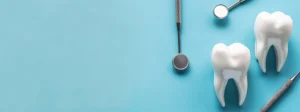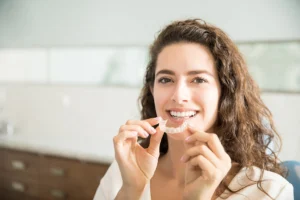Table of Contents
Maintaining a healthy smile goes beyond having clean and white teeth. It’s about protecting your teeth and gums from cavities, gum disease, and other oral health issues that can lead to serious complications if not managed properly. Two essential habits, flossing and brushing, form the foundation of good oral hygiene. But are you doing them correctly? And why are they so important?
At Rim Point Dental, we prioritize educating our patients about the best oral hygiene practices to ensure long-lasting dental health. Let’s explore how flossing and brushing, when done properly, can make a significant difference in your oral health.
Why Brushing is Crucial for Oral Health
Brushing your teeth is the first line of defense against plaque buildup, cavities, and gum disease. Plaque, a sticky film of bacteria, forms on your teeth and gums after eating and drinking. When left untreated, it hardens into tartar, which can only be removed by a dental professional. Regular brushing helps prevent plaque buildup, reducing the risk of oral diseases.
How Often Should I Brush?
The American Dental Association (ADA) recommends brushing your teeth at least twice a day, ideally once in the morning and once before bed. But why is brushing at night so important? During the day, your mouth constantly produces saliva, which helps wash away food particles and neutralizes harmful acids. At night, saliva production decreases, giving bacteria a chance to thrive if food particles are left behind. Brushing before bed is essential for removing these particles and protecting your teeth overnight.
Rim Point Dental advises our patients to brush for at least two minutes each time, making sure to cover all surfaces of the teeth, including the outer, inner, and chewing surfaces.
Proper Brushing Techniques
Brushing might seem simple, but doing it the right way can make all the difference. Here’s how to brush effectively:
- Use a Soft-Bristled Toothbrush: Hard-bristled brushes can be too abrasive on enamel and gums. Soft-bristled brushes are effective at removing plaque without causing damage.
- Brush at a 45-Degree Angle: Position your toothbrush at a 45-degree angle to your gums, allowing the bristles to clean beneath the gumline where plaque often accumulates.
- Use Gentle, Circular Motions: Brushing in small circular motions is more effective than using back-and-forth strokes, which can wear down your enamel over time.
- Brush All Surfaces: Pay attention to the outer, inner, and chewing surfaces of every tooth, making sure no area is missed.
- Don’t Forget Your Tongue: Bacteria can accumulate on your tongue, leading to bad breath and contributing to oral health problems. Gently brushing your tongue or using a tongue scraper helps remove bacteria and freshens your breath.
The Importance of Flossing: Why Do I Need to Floss?
Many people overlook flossing, thinking that brushing alone is sufficient to maintain good oral health. However, flossing is just as important as brushing because it reaches the areas between your teeth that a toothbrush can’t access. These tight spaces are prime locations for plaque buildup, which can lead to cavities and gum disease if not properly cleaned.
Floss removes food particles and plaque from between the teeth and along the gum line, reducing the risk of gum inflammation and tooth decay. So, if you’ve ever asked, why do I need to floss? the answer is simple: flossing is crucial for cleaning the areas your toothbrush can’t reach.
Does Flossing Cause Gum Recession?
A common misconception is that floss can cause gum recession, a condition where the gum tissue surrounding the teeth wears away, exposing more of the tooth or its root. However, when done correctly, flossing does not cause gum recession. In fact, it helps prevent it by reducing the risk of gum disease, which is one of the primary causes of gum recession.
To avoid damaging your gums, follow these tips:
- Use Gentle Motions: Avoid snapping the floss into your gums. Instead, gently slide the floss between your teeth and curve it into a C-shape around each tooth, carefully moving it up and down to clean the sides of the tooth and just below the gumline.
- Choose the Right Floss: Whether you prefer waxed, unwaxed, or dental tape, choose a floss that feels comfortable and allows you to clean between your teeth without causing discomfort.
- Be Consistent: Floss every day, using the correct technique, and this will improve your gum health and prevent inflammation, which can otherwise lead to gum recession.
If you have concerns about your gum health or are unsure if you’re flossing correctly, the team at Rim Point Dental is here to guide you.
How Often Should I Floss?
Just like brushing, floss every day. Some people prefer to floss after every meal, while others do it once a day, usually at night. Flossing at night is a good habit to adopt because it removes food particles and plaque that have built up throughout the day.
Flossing Techniques for Healthy Gums and Teeth
Flossing is a simple process, but using the correct technique ensures you get the maximum benefits:
- Use About 18 Inches of Floss: Wind most of the floss around your middle fingers, leaving about 1 to 2 inches of floss to work with.
- Hold the Floss Tightly Between Your Thumbs and Index Fingers: This allows you to control the movement of the floss and navigate it between your teeth.
- Gently Guide the Floss Between Your Teeth: Avoid snapping or forcing the floss into your gums, which can cause irritation.
- Form a C-Shape Around Each Tooth: Curve the floss around the tooth and gently move it up and down to remove plaque and food particles from the sides of the tooth and beneath the gumline.
- Use a Fresh Section of Floss for Each Tooth: As you move from tooth to tooth, unwind a new section of floss to avoid reintroducing plaque and debris into the areas you’ve already cleaned.
Brushing vs. Flossing: Is One More Important?
While both brushing and flossing are essential to oral health, they serve different purposes. Brushing removes plaque from the surface of your teeth, while floss cleans the tight spaces between your teeth and under the gumline. Skipping one or the other can leave areas of your mouth vulnerable to plaque buildup, leading to cavities, gum disease, and other oral health problems.
To maintain optimal oral health, it’s important to combine both practices into your daily routine. At Rim Point Dental, we recommend brushing at least twice a day and floss once a day to ensure every area of your mouth is properly cleaned.
Additional Tips for Effective Oral Hygiene
In addition to brushing and flossing, there are other steps you can take to improve your oral health:
- Use Mouthwash: Mouthwash can help reduce plaque and kill bacteria that brushing and flossing might miss. Look for mouthwash with fluoride to strengthen your teeth and prevent cavities.
- Eat a Balanced Diet: Limiting sugary and acidic foods can help prevent tooth decay and erosion. Eating a diet rich in fruits, vegetables, and dairy products can support your overall oral health.
- Visit Your Dentist Regularly: Regular dental checkups and cleanings are essential for maintaining healthy teeth and gums. During these visits, our dentist can identify early signs of oral health issues and provide professional cleaning to remove tartar buildup.
Conclusion
Maintaining good oral hygiene through proper brushing and flossing is essential for preventing cavities, gum disease, and other dental problems. Brushing removes plaque from the surface of your teeth, while flossing cleans between the teeth and under the gumline. By incorporating both practices into your daily routine, you can keep your teeth and gums healthy for years to come.
At Rim Point Dental, we’re dedicated to helping our patients maintain optimal oral health. If you have questions about flossing, or brushing, or need advice on the best techniques, we’re here to help. Remember, flossing and brushing are two of the most important habits you can adopt for your oral health, so make sure you’re doing them both correctly and consistently.



